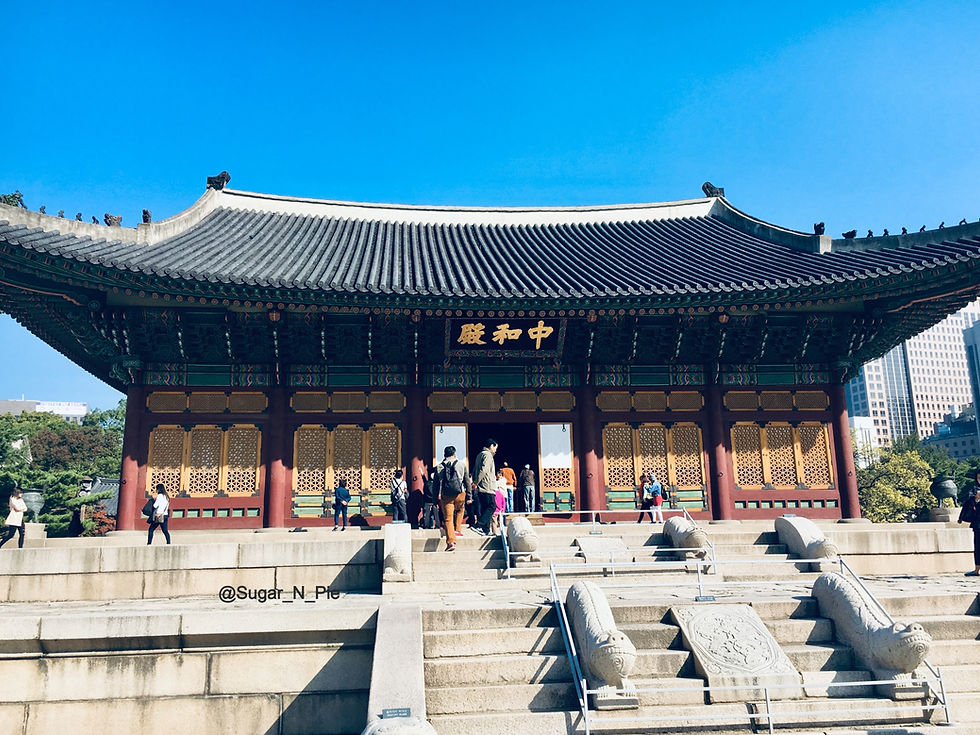[Seoul Travel Guide] Deoksugung Palace, one of the Five Grand Palaces that Must-Visit In South Korea
- piepieworlds
- Jun 6, 2023
- 3 min read
Updated: Oct 22, 2023
Hello there! If you're seeking a slice of royal elegance in the heart of bustling Seoul, look no further than Deoksugung Palace. Nestled amidst the modern cityscape, this historic gem is a living testament to Korea's royal heritage.
![[Seoul Travel Guide] Deoksugung Palace, one of the Five Grand Palaces that Must-Visit In South Korea](https://static.wixstatic.com/media/ad3217_f5309b15519a49e1a311a235158351dc~mv2.jpg/v1/fill/w_940,h_630,al_c,q_85,enc_avif,quality_auto/ad3217_f5309b15519a49e1a311a235158351dc~mv2.jpg)
General Information
Location of Deoksugung Palace
99 Sejong-daero, Jung-gu, Seoul
서울특별시 중구 세종대로 99 (정동)
How to go to Deoksugung Palace?
Option 1 - Take subway Line 1 to City Hall Station (Exit 2)
Option 2 - Take subway Line 2 to City Hall Station (Exit 12)
How much is the entrance Fee of Deoksugung Palace?
Regular ticket : (Adult)1000won (Child) 500won
Total Admission Pass : (Adult)10000won (Child) 5000won
Free Admission for children under 7 years old, senior citizen above 65 years old, wearing hanbok, Culture Day (the last Wednesday of each month)
What is the opening hours of Deoksugung Palace?
0900 to 2100, Tuesday to Sunday (Closed on Mondays)
About Deoksugung
Deoksugung, is one of the Five Grand Palaces located in the heart of Seoul, South Korea. It is the final residence of King Gojong, the last king of Joseon Dynasty and the first Emperor of Korea.

Historic Background
Dated back to 15th century Joseon Dynasty, Deoksugung wasn’t a palace originally. It was the residence of Wolsandaegun, the older brother of King Seongjong.
During Imjin War (the Japanese Invasion in 1592) , all the palaces in Korea including Gyeongbok Palace, were being severely damaged and burnt to ground. So it was being chosen as the temporarily palace for King Seonjo (the 14th king of Joseon Dynasty) when he returned to Seoul from his evacuation.
Prince Gwanghae who succeeded King Seonjo at this place, renamed it as “Hyeongungung”, formalizing it as a royal palace. After King Gwanghae was being overthrown, this palace was used as an auxiliary palace for about 270 years.
Until late 19th century, Emperor Gojong chose to stay here and expand it with the western style of building . He continued to live in this palace even after being forced to pass the throne to his son. This palace was then renamed as “Deoksugung”, a palace of virtuous longevity.
Features
As you step through its majestic gates, you'll be transported to a time when emperors and their courts graced these hallowed halls.
Junghwajeon, also known as Junghwa Hall, is the main hall of Deoksugung, where state affairs and meeting were conducted.

These small stone tablets in front of Junghwajeon, are engraved with the rank of officials in descending order. Officials required to line according to their rank during meeting. The higher rank would stand closer to the king.

Back in time, Deoksugung also act as an important hub for cultural exchange. It has Junmyeongdang, a hall where the king used to receive honored guests and foreign envoys. Jeonggwanheon, a small hall where the king used to relax and entertain guests. Seokjojeon, a Western-style building that was used as a residence for the king and his family.

One of the most popular attractions in Deoksugung is the Changing of the Royal Guard ceremony. The ceremony would takes place three times (11:00, 14:00 and 15:30) everyday, in front of Daehanmun. The ceremony features guards dressed in traditional Korean attire and is a must-see for anyone visiting the palace.

But Deoksugung isn't just about history; it's a serene oasis in the midst of urban life. The beautiful palace, stone wall road and gardens are definitely worth to wander through.
So, come and explore the palace, soak in its tranquil ambiance, and let Deoksugung unveil the regal stories of Korea's past.
Bon voyage!
ヾ(•ω•`)o

Comments